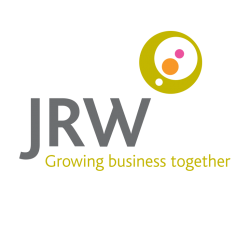BUDGET IMPLICATIONS
by Kevin D. Ferguson BA CA, Partner , JRW Chartered Accountants

In this month’s article we provide a summary of the key tax points from the Summer Budget. We have mainly concentrated on the tax measures that will directly affect individuals, employers and small businesses in 2016 and 2017.
Tax rates and the personal allowance
Although the personal allowance for 2016-17 was set at £10,800, it has now been confirmed that it will rise from its current level of £10,600 to £11,000 for 2016-17. The government plans to increase the personal allowance to £12,500 by 2020.
The personal allowance will automatically increase in line with the equivalent of 30 hours a week at the national minimum wage for individuals over 21, once the personal allowance has reached £12,500. The basic rate limit will be increased to £32,000 for 2016-17 and to £32,400 for 2017-18. As a result, the higher rate threshold will be £43,000 in 2016-17 and £43,600 in 2017-18.
National living wage
From April 2016, a new National Living Wage of £7.20 an hour for the over 25’s will be introduced. This will rise to over £9 an hour by 2020.
Dividends
The dividend tax credit (which reduces the amount of tax paid on income from shares) is to be replaced with a new £5,000 tax-free dividend allowance for all taxpayers from April 2016.
Tax rates on dividend income will also be increased. The new rates of tax on dividend income above the allowance will be 7.5% for basic rate taxpayers, 32.5% for higher rate taxpayers and 38.1% for additional rate taxpayers.
Inheritance tax on the family home
Currently, inheritance tax is charged at 40% on estates over the tax-free allowance of £325,000 per person. Married couples and civil partners can pass any unused allowance on to one another. From April 2017, each individual will be offered a family home allowance so they can pass their home on to their children or grandchildren tax-free after their death. This will be phased in from 2017-18. Broadly, the family home allowance will be added to the existing £325,000 IHT threshold, meaning the total tax-free allowance for a surviving spouse or civil partner will be up to £1 million in 2020-21. The new allowance will be tapered away from those leaving more than £2 million with the intention that those leaving more than £2.35m will not benefit from the new allowance.
Corporation Tax
The Chancellor has announced that the main rate will now be cut further from 20% to 19% in 2017, and then to 18% in 2020, benefiting over a million businesses.
National Insurance
Businesses will have their employer national insurance bill cut by another £1,000 from April 2016, as the employment allowance rises from £2,000 to £3,000. This increase means that from April next year, businesses will be able to employ four people full time on the national living wage and pay no national insurance at all.
Also from April 2016, companies where the director is the sole employee will no longer be able to claim the employment allowance.
‘With regards tax avoidance and evasion, HMRC is to be given significant extra investment – some £60m between now and 2020 for increased work on tackling evasion and non-compliance. It will be interesting to see how and where this money will be spent’.
